Social engineering attack
What is spear phishing in cyber security?
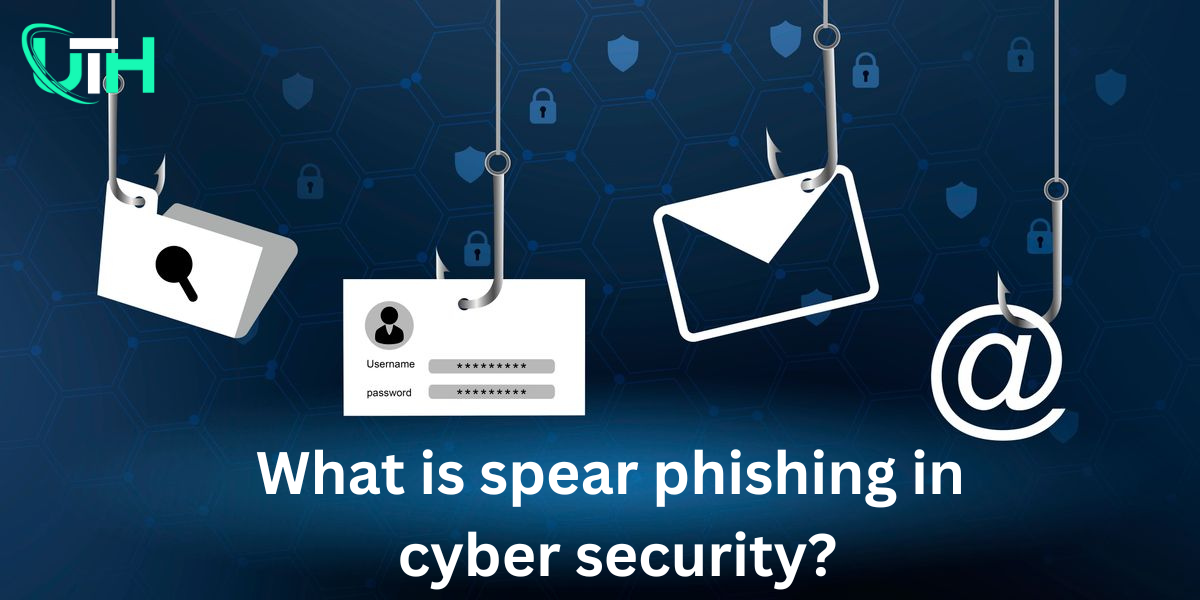
What is spear phishing in cyber security? Discover what spear phishing is in cybersecurity, how it works, and why it’s a major threat. Learn how to identify these targeted phishing attacks and protect yourself with expert tips and effective prevention strategies. Although spear phishing accounts for just 1% of all received emails, it is perfectly responsible for 66% of all security breaches. This targeted cyberattack focuses on specific individuals or organizations, using personalized and deceptive tactics to hack sensitive information. Victims often face significant financial losses due to data breaches, fraudulent money transfers, and other damaging consequences caused by these attacks.
The specialists at UniversalTechHub believed it was critical to write this blog article, which asks, “What is a spear phishing attack in cybersecurity?” ‘Exploring Spear Phishing Examples, Tactics, and Protection Strategies’ will educate people and businesses about the complexities of spear phishing.
But what does “spear phishing” involve in practice?
What is spear phishing?
What is spear phishing in cyber security? Spear phishing is a targeted form of cyberattack in which attackers use personalized emails or messages to cheat specific individuals or organizations. Unlike common phishing, spear phishing targets specific individuals or organizations, making it more convincing and harder to detect. These attacks often involve thorough investigation, with attackers gathering details about their victims from social media, professional networks, or public records.
Armed with this information, attackers craft messages that appear legitimate, frequently impersonating trusted sources like colleagues, executives, or reputable organizations. These messages typically include malicious links, infected attachments, or requests for important information, such as login credentials or financial details.
Attackers can gain unauthorized system access, install malware, or steal sensitive data once the victim succumbs to the trap. Fighting spear phishing requires maximum awareness, regular training, advanced email security tools, multi-factor authentication, and careful handling of sensitive requests. By staying vigilant and minimizing the public sharing of personal information, individuals and organizations can significantly reduce the risks of this sophisticated cyber threat.
How does spear phishing work?
Cybercriminals act spear phishing by gathering detailed information about their targets to craft convincing and personalized emails that appear official. These emails often contain harmful links or attachments designed to trick recipients into sharing sensitive information or login credentials.
The first step in spear phishing is researching the target. Attackers collect details like the target’s job, interests, and connections to make their phishing attempt more tailored and effective.
Once enough information is gathered, the next step is creating the email. Using the collected details, cybercriminals design messages that feel personal and relevant to the recipient. The goal is to get the victim to click on a link leading to a phishing website that asks for private information.
Research and targeting
Cybercriminals use spear phishing to gather as much information as possible about potential victims, enabling them to craft fraudulent email campaigns aimed at extracting sensitive data.
Understanding spear phishing in cybersecurity clarifies how this tailored approach increases the efficiency of attacks and improves the likelihood of unauthorized access.
Hackers often collect details such as relationships, job roles, and recent activities by searching public databases, company websites, and social media profiles. This information helps them create personalized messages that appear legitimate, increasing the chances of victims clicking harmful links or revealing personal information.
For cybersecurity professionals, combating these highly customized phishing attempts remains a significant and ongoing challenge.
Message Creation
The success of spear phishing lies in deceiving recipients with messages that appear genuine. Cybercriminals often use social engineering techniques to manipulate emotions, creating a sense of urgency that pushes victims to share sensitive information or click on malicious links.
These deceptive emails are often crafted using personal data gathered from social media, making them feel more relatable and trustworthy. Hackers typically disguise their phishing emails to appear as though they’re from credible sources, increasing the likelihood that recipients will engage with the content.
The psychology behind these tactics exploits cognitive biases and emotions, such as curiosity or fear, to compel action. While cybersecurity awareness training is vital for identifying and reporting suspicious emails, understanding these manipulation strategies and remaining vigilant are key to preventing such attacks.
Sending the message
Once hackers have identified their targets, the next step is sending the spear phishing email.
Scammers go to great lengths to make their emails appear authentic, often incorporating logos and branding from well-known organizations or banks to deceive their victims.
The consequences for recipients who open malicious attachments or click on harmful links can be severe. Cybercriminals may gain access to sensitive information, steal funds, or even take control of the victim’s device.
This highlights the critical need for robust cybersecurity measures to detect and prevent such attacks effectively.
How successful is a Spear Phishing Attack?
The effectiveness of spear phishing in cybersecurity lies in its ability to target specific vulnerabilities in its victims. Attackers use social engineering techniques that create a sense of urgency or panic, tricking targets into sharing sensitive information or falling for scams.
This type of cyberattack exploits emotional and psychological weaknesses, making it harder for people to recognize the fraud. When cybercriminals use personally identifiable information—such as the victim’s name, job title, or recent activities—they make the message appear more legitimate, lowering the victim’s defenses.
By creating a sense of urgency—such as threatening account suspension or a security breach—attackers pressure the victim into quick action. These strategies tap into our natural tendency to trust and react quickly in stressful situations, increasing the success rate of spear phishing attacks.
Personalization
The success of spear phishing heavily depends on personalization, as fraudsters tailor their messages using specific information about their targets. By mimicking trusted businesses or incorporating details familiar to the recipient, attackers make their phishing emails appear legitimate.
This personalized approach creates a sense of comfort and familiarity, increasing the likelihood that the victim will share sensitive information or click on harmful links. To craft these convincing messages, cybercriminals often gather data from compromised databases, social media profiles, or past interactions.
The customized nature of these attacks makes individuals more vulnerable, underscoring the need for robust cybersecurity measures and ongoing awareness to defend against such sophisticated threats.
Social engineering tactics
What is spear phishing in cybersecurity? Social engineering techniques play a key role in spear phishing, as cybercriminals manipulate victims’ emotions and exploit their trust to bypass conventional security measures and steal sensitive information.
Fraudsters use tactics like tailgating, pretexting, and baiting attack to deceive victims into revealing personal details by creating situations that seem credible. Through pretexting, they craft a false story to convince individuals to share confidential information. Baiting lures victims with tempting offers or downloads that often contain harmful software.
On the other hand, tailgating involves criminals exploiting employees’ tendency to hold doors open for others to gain unauthorized access to secure areas. These deceptive methods emphasize the critical need for stronger cybersecurity measures and ongoing user education to protect against ever-evolving threats.
Fear and urgency tactics
Cybercriminals often exploit feelings of urgency and anxiety to prompt quick actions, such as clicking on harmful links or sharing sensitive information. Their goal is to push victims into acting impulsively, making them believe that immediate action is required.
Spear phishing attacks manipulate emotions like fear and urgency to deceive users into compromising their cybersecurity. This approach increases the likelihood of success, as victims may be too rushed or distracted to spot warning signs.
To combat these threats, significant changes in cyber defense strategies are needed. A comprehensive approach, combining strong technological protections with ongoing cybersecurity awareness training, is essential. We must equip individuals with the knowledge to recognize phishing attempts, assess potential risks, and respond effectively to protect both personal and organizational data.
Identifying Spear Phishing Attacks
Cybercriminals frequently exploit feelings of urgency and anxiety to push victims into quick actions, such as clicking on harmful links or sharing sensitive information. Their goal is to prompt impulsive behavior by convincing victims that immediate action is necessary.
Spear phishing attacks leverage emotions like fear and urgency to manipulate users into compromising their cybersecurity. This tactic increases the likelihood of success, as victims may be too hurried or distracted to notice warning signs.
To effectively combat these threats, significant changes to cyber defense strategies are required. A comprehensive approach, blending strong technological protections with continuous cybersecurity awareness training, is crucial. We must equip individuals with the skills to recognize phishing attempts, assess potential risks, and respond appropriately to safeguard both personal and organizational data.
Suspicious Sender
Unwanted or suspicious email attachments should raise red flags for a potential spear phishing attack. It’s essential to be cautious when responding to communications from unknown senders to avoid falling victim to cybercrime or online scams.
These phishing emails can infect the recipient’s device with malware or compromise sensitive personal information if links are clicked or files are downloaded.
To enhance your cybersecurity and avoid these risks, never open attachments or click on links in emails from unfamiliar senders. If you’re uncertain about an email’s legitimacy, consider reaching out to the sender directly using a trusted communication method to verify their authenticity.
By staying aware of the tactics hackers use and remaining vigilant, individuals can better protect themselves and their data online.
Malicious Links and Attachments
Links or attachments in an email that appear suspicious could potentially conceal malware or phishing websites. To prevent security breaches and protect sensitive information, it’s crucial to verify the authenticity of such elements before interacting with them.
Email filtering software can enhance cybersecurity measures by identifying and blocking potentially harmful links and attachments before they even reach your inbox. Additionally, implementing strong multi-factor authentication (MFA) adds extra layers of protection. Staying informed about emerging hacker strategies is essential for individuals to proactively safeguard against evolving threats. Cyber threat intelligence systems can also play a vital role in this process. By exercising caution and utilizing these tools, individuals can significantly reduce the risks associated with opening malicious attachments in emails.
Urgent or threatening language
Sending an email with a threatening or urgent tone is a common tactic used to provoke emotional reactions rather than rational responses. Cyber resilience training, along with a well-defined incident response strategy, can help reduce the effectiveness of these emotionally charged phishing efforts.
When companies foster a culture of cyber awareness, staff members become more adept at recognizing and reporting suspicious emails. Key measures to strengthen defenses against phishing attacks include implementing email filtering systems and conducting regular cybersecurity training sessions.
To minimize potential damage and support a swift recovery, it’s essential to establish clear guidelines for responding to incidents quickly. Additionally, simulated phishing exercises can help identify vulnerabilities and improve overall cyber resilience.
Related articles:
Spear phishing vs phishing: Understand the Risks
What is spear phishing attack? A detailed guide
Spear Phishing Prevention Tips
Adopting proactive cybersecurity measures and exercising extra caution when responding to emails can help you avoid spear phishing and related attacks. Key steps to take include being cautious with unknown or suspicious communications, double-checking requests for personal information, enabling two-factor authentication, and ensuring your software is up-to-date for better protection.
To protect yourself and your team from spear phishing attempts, it’s essential to learn how to recognize common warning signs, such as unusual sender addresses, urgent requests for action, or generic greetings. Fostering a mindset of doubt and critical thinking can significantly reduce the chances of falling victim to these fraudulent tactics.
Regular cybersecurity training and simulations can further reinforce these practices, keeping everyone informed about the latest phishing techniques.
Beware of Phishing Attempts
A key part of protecting yourself from spear phishing is being vigilant about suspicious emails. By participating in regular cyber awareness programs and practicing good cyber hygiene, individuals can improve their ability to detect and report potentially harmful communications.
By staying alert and learning to distinguish legitimate emails from fake ones, you can greatly reduce your vulnerability to cyber threats. Cyber awareness programs provide valuable insights into the latest phishing tactics, helping you recognize and avoid scams.
Both individuals and businesses can strengthen their digital defenses by implementing simple but effective cybersecurity measures, such as regular software and password updates.
Verify Requests for Confidential Information
Verifying requests for sensitive information before sharing it can significantly reduce the risk of data breaches and identity theft.
Successfully detecting and preventing spear phishing attempts requires continuous cyber threat prevention strategies and staying updated on new cybersecurity trends.
The likelihood of falling victim to phishing scams can be greatly reduced if individuals and businesses use secure channels to confirm the sender’s identity and the legitimacy of the request.
To strengthen defenses against harmful cyber-attacks, consider using email filtering technologies, implementing multi-factor authentication, and conducting regular security awareness training sessions.
Staying ahead of evolving cyber threats requires keeping up with the latest trends in cyber attacks and security technologies. It’s essential to remain informed to protect yourself effectively in today’s digital landscape.
Enable Two-Factor Authentication
Adding multi-factor authentication to digital accounts enhances security and reduces the risk of successful spear phishing attempts.
Participating in cybersecurity education programs helps individuals understand common phishing techniques and the importance of protecting personal information. By learning to recognize phishing emails and suspicious links, users can take preventative measures against cyber threats.
Frequent cybersecurity best practices training in organizations fosters a mindset of constant vigilance and proactive defense against ever-evolving phishing tactics. By implementing preventive measures like email filters, firewalls, and anti-phishing software, you can strengthen your defenses and decrease the likelihood of falling victim to sophisticated spear phishing attempts.
Verify Requests for Confidential Information
Verifying requests for sensitive information before sharing it can significantly reduce the risk of data breaches and identity theft.
To effectively detect and prevent spear phishing, it’s essential to adopt continuous cyber threat prevention strategies and stay updated on the latest cybersecurity trends.
The likelihood of falling victim to phishing scams can be drastically reduced if individuals and businesses use secure channels to verify both the sender’s identity and the legitimacy of the request.
To bolster defenses against cyber attacks, consider implementing email filtering technologies, enabling multi-factor authentication, and conducting regular security awareness training sessions.
Staying ahead of the curve in cybersecurity means keeping up with emerging cyber attack trends and new security technologies. It’s crucial to stay informed to ensure effective protection in today’s digital world.
Read more:
How do spear phishing attacks differ from standard phishing attacks
Image of Spear Phishing Email with Victims Employerad Link Example
Conclusion
Finally, what is spear phishing in cybersecurity? Spear phishing is a type of advanced cyber attack, often referred to as targeted social engineering. Organizations can reduce the risk of such attacks by understanding the strategies hackers use and implementing effective security measures. To protect sensitive information and prevent breaches, it’s essential to stay updated on the latest threats, educate staff about phishing techniques, and adopt strong security solutions.
Seeking expert cybersecurity advice.
Working together with the cybersecurity specialists in Marietta and Alpharetta can offer another line of protection against spear phishing. Work together with our Atlanta-based cybersecurity team to beef up your defenses. We provide personalized insights into current cyber dangers and advice on how to keep your sensitive data safe.
FAQ’s
What is spear phishing in cyber security?
Spear phishing in cyber security refers to a targeted cyber attack where an attacker sends deceptive, personalized messages to a specific individual or organization to steal sensitive information, such as login credentials, financial details, or personal data. Unlike general phishing, spear phishing is highly focused and tailored to the victim.
What is spear phishing?
Spear phishing is a targeted cyberattack where cybercriminals impersonate trusted individuals or organizations to trick victims into revealing sensitive information or downloading malicious software. Unlike traditional phishing attacks that use generic messages, spear phishing attacks are highly personalized, making them more effective.
How is spear phishing in cyber security different from regular phishing?
The key difference between spear phishing in cyber security and regular phishing is the level of targeting. Regular phishing involves mass emails sent to many users, hoping that some will fall for the scam. In contrast, spear phishing in cyber security involves a more sophisticated approach, targeting specific individuals using personal information to craft a believable and convincing message.
-
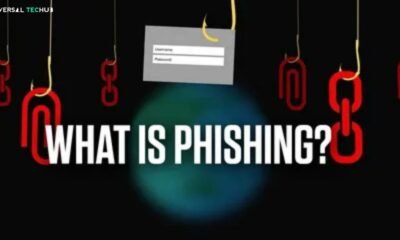
 Phishing attack5 months ago
Phishing attack5 months agoWhat is Spear Phishing and How You Can Identify This Scam?
-
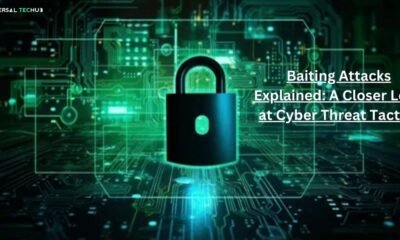
 Social engineering attack7 months ago
Social engineering attack7 months agoBaiting Attacks Explained: A Closer Look at Cyber Threat Tactics
-

 Social engineering attack5 months ago
Social engineering attack5 months agoWhat are Social Engineering Attacks – A Complete Guide to Cyberattacks Prevention
-

 Social engineering attack7 months ago
Social engineering attack7 months agoSpear Phishing Attack: A Targeted Cyber Threat
-
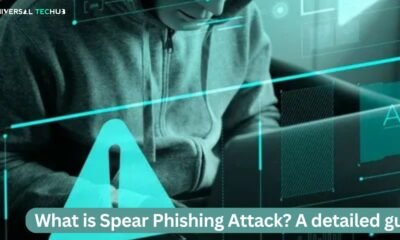
 Social engineering attack7 months ago
Social engineering attack7 months agoWhat is spear phishing attack? A detailed guide
-

 Phishing attack5 months ago
Phishing attack5 months agoWhat Are Phishing Emails? A guide for you
-
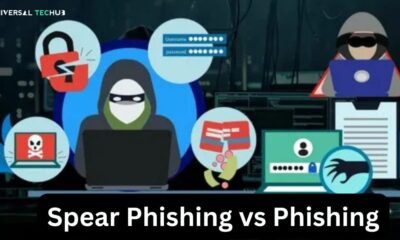
 Social engineering attack7 months ago
Social engineering attack7 months agoSpear phishing vs phishing: Understand the Risks
-
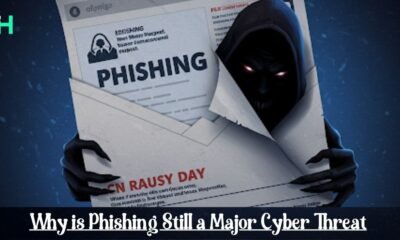
 Phishing attack1 month ago
Phishing attack1 month agoWhy is Phishing Still a Major Cyber Threat? Everything You Need to Know




























